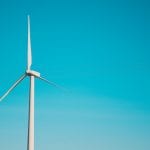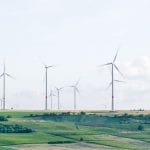Around The Web
Australia’s offset market oversupplied despite rising voluntary demand
School climate strikes: 1.4 million people took part, say campaigners
Activist Greta Thunberg, 16, says action proved ‘no one is too small to make a difference’
More than 1.4 million young people around the world took part in school strikes for climate action, according to environmental campaigners.
Greta Thunberg, the 16-year-old Swedish student whose solo protest last August prompted the global movement, said: “We proved that it does matter what you do and that no one is too small to make a difference.”
Continue reading...Fund to boost female and black physicist numbers
Giant composting "hamster wheel" wins the Victorian Design Challenge
Climate change: Water shortages in England 'within 25 years'
Old Toyota car plant to become green hydrogen hub, with backing of ARENA
 ARENA provides $3.1 million towards green hydrogen hub that will use solar and battery storage at old Toyota car plant.
ARENA provides $3.1 million towards green hydrogen hub that will use solar and battery storage at old Toyota car plant.
The post Old Toyota car plant to become green hydrogen hub, with backing of ARENA appeared first on RenewEconomy.
Operations & maintenance contractors sought for Swan Hill solar farm
 Impact Investment Group is seeking expressions of interest for an Operation and Maintenance (O&M) contract at the Swan Hill Solar Farm
Impact Investment Group is seeking expressions of interest for an Operation and Maintenance (O&M) contract at the Swan Hill Solar Farm
The post Operations & maintenance contractors sought for Swan Hill solar farm appeared first on RenewEconomy.
Will the NSW election deliver a change in electricity policy?
 The major parties in NSW have developed policies to address climate and energy, but they don’t talk about them.
The major parties in NSW have developed policies to address climate and energy, but they don’t talk about them.
The post Will the NSW election deliver a change in electricity policy? appeared first on RenewEconomy.
Carnegie flags reboot for wave power business, as key investors provide funding
 Carnegie Clean Energy hopes to resurrect wave power business with help of key investors, while selling or winding down solar micro-grid subsidiary.
Carnegie Clean Energy hopes to resurrect wave power business with help of key investors, while selling or winding down solar micro-grid subsidiary.
The post Carnegie flags reboot for wave power business, as key investors provide funding appeared first on RenewEconomy.
Fake hake: species frauds deterred by sustainability standards, study finds
Less than 1% of products certified sustainable by the Marine Stewardship Council were mislabelled
DNA barcoding of more than 1,400 seafood products certified as sustainable by the Marine Stewardship Council (MSC) has revealed that less than 1% were mislabelled, compared with an average of 30% across the sector as a whole.
The MSC is the international NGO that sets the standard for sustainable fishing around the world and its blue label – on products in store, on fresh fish counters and on restaurant menus – indicates that seafood has been sustainably caught and traced back to its source. More than 300 fisheries in over 34 countries are certified to the MSC’s standard and more than 35,000 seafood products worldwide carry the label.
Continue reading...UK scientists join race for lab-grown meat
#Superbloom or #poppynightmare? Selfie chaos forces canyon closure
California town bars access to site as stunning flowers draw at least 50,000 visitors
This weekend thousands of tourists frolicked through fields of poppies in southern California, posting photos tagged #superbloom. But for the town of Lake Elsinore, the influx of visitors quickly became a #poppynightmare.
Related: Super bloom: can this tiny California town avoid another 'flowergeddon'?
Continue reading...Wind power generated more than one third of British electricity last week
 Wind energy in Great Britain last week generated over a third of the country’s electricity, more than any other power source.
Wind energy in Great Britain last week generated over a third of the country’s electricity, more than any other power source.
The post Wind power generated more than one third of British electricity last week appeared first on RenewEconomy.
Germany renewables share jumped to to 72.4% last week
 After reaching 65% renewables earlier this month, Germany soared past that to 72.4 per cent last week, with wind power accounting for most of it.
After reaching 65% renewables earlier this month, Germany soared past that to 72.4 per cent last week, with wind power accounting for most of it.
The post Germany renewables share jumped to to 72.4% last week appeared first on RenewEconomy.
Windlab wins asset management contract for Nevertire solar farm
 Windlabhas entered into an agreement to provide asset management services for the 131.8 MWdc Nevertire Solar Farm
Windlabhas entered into an agreement to provide asset management services for the 131.8 MWdc Nevertire Solar Farm
The post Windlab wins asset management contract for Nevertire solar farm appeared first on RenewEconomy.
Coalition ramps up scare campaign against climate action, renewables
 Experts slam modelling for government climate report as it emerges "peer reviewer" is being paid $916/hour by Trump Administration to fight landmark climate suit brought by children in US.
Experts slam modelling for government climate report as it emerges "peer reviewer" is being paid $916/hour by Trump Administration to fight landmark climate suit brought by children in US.
The post Coalition ramps up scare campaign against climate action, renewables appeared first on RenewEconomy.
CP Daily: Monday March 18, 2019
California task force to review existing offset protocols as member applications expected in April
England could run short of water within 25 years
Exclusive: Environment Agency chief calls for use to be cut by a third
England is set to run short of water within 25 years, the chief executive of the Environment Agency has warned.
The country is facing the ‘‘jaws of death”, Sir James Bevan said, at the point where water demand from the country’s rising population surpasses the falling supply resulting from climate change.
Continue reading...


